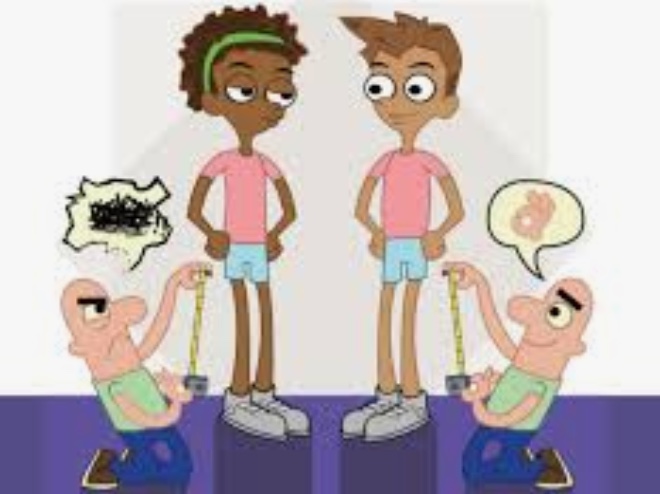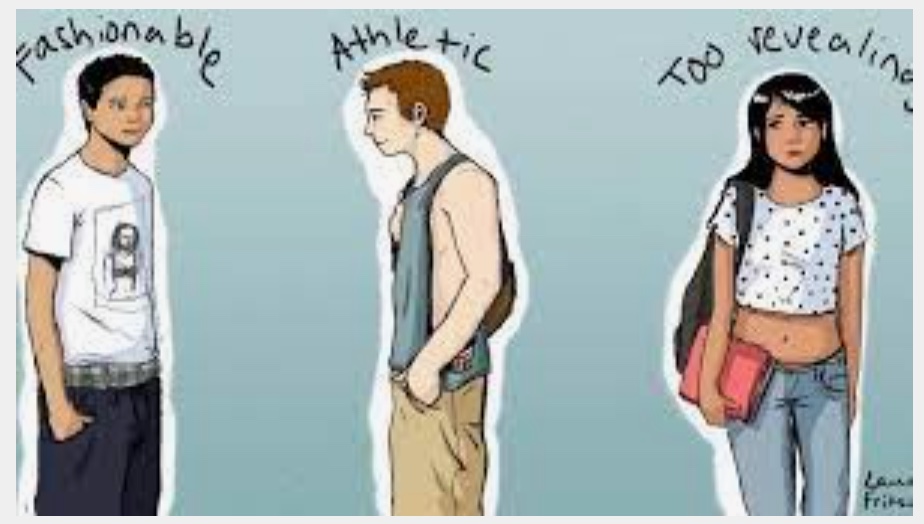Overview
Fashion is an iconic way for people of all ages, especially for adolescents and young adults, to show individuality. As with any institution, public high schools must have rules to establish norms and promote a positive learning environment for all. With these formal written rules some groups are targeted more so than others.
Looking at gender bias in dress codes can provide insight into possible inequalities within the school. This serves as a method of investigating yet another instance where women face inequalities within the educational system. There has been significant attention on public high school dress codes in the past. This attention is a result of the growing concerns and examples of blatant biases, discrimination, and inequalities. The first wave of criticisms focused on racial discrimination within the written dress codes as well as with the enforcement of said dress codes. The second, and more current, wave is focused on sexual discrimination in both the formal written dress codes as well as dress code enforcement. The second wave had led to legal ramifications, which focused on how dress codes target young women more so than their male counterparts. Both situations express biases, discrimination, and gender inequality which have negative impacts on the targeted populations.

Therefore, it is not new information that women have been targeted in dress codes. The focus of this research is to collect and analyze information to determine to what degree the gender biases within the written dress codes have been addressed and/or corrected. Targeting women’s clothing more than men’s attire creates many problems which promotes gender stereotypes and disrupts the learning environment. First it limits women’s participation in class. Limiting participation includes but is not limited to time out of class as well as ridicule from teachers and peers. Many schools discipline dress code violations by sending the girl home for wearing “inappropriate” clothing. Others are not as harsh and force the young woman to change her clothes. This has been seen to lead to the “dress code shirt” which in many schools is a bright color shirt meant to draw attention to and embarrass the student. All these disciplinary actions result in the student missing out on valuable education. More socially it is teaching girls that they are responsible for not “distracting” boys. Lastly, girls are being taught that if they do “distract” boys or bring “too much attention” to themselves they should be publicly shamed or humiliated.
Importance
High school is an important time in adolescent development where social norms and adhering to regulations are equally important, if not more important, than learning content knowledge. If high school dress codes still contain gender biases and stigmas, then all parties are perpetuating such stigmas. Numerous studies show that women and girls are treated unequally at school, at work, in relationships and even the healthcare system. School administrators are knowingly including this unequal treatment in their written dress codes which perpetuates these inequalities. Both by teaching young women that they need to make sure they do not “bother” or “distract” any male classmates, but also teaching young men that they are better than their women counterparts and do not have to be held accountable for their own actions and level of concentration. With more rules and more specific limitations than their male counterparts women must always censor their attire. Very rarely will a man walk into a clothing store and not be able to wear an item to school, where women must shop to “fit” the rules every time they purchase clothing. This takes some focus off learning and puts it on not “bothering” men or to learn to focus on not “distracting” men with their bodies. This ideology is perpetuated through adulthood (in many professions and the media) and passed onto their children. At this point in time is there any way to truly create an equal society? Many articles highlight that the only real way to fix these problems is through a full abolishing of dress codes or to have a complete overhaul on all existing dress codes.

This is a pressing and blatant issue within our public schools! This is evident in the viral video of Drew Jarding. Drew, a male high school student, tested his high school for gender biases when enforcing the dress code and how it relates to rape myths. Please check out the compilation of his videos (includes some of his original TikTok videos as well as interviews). I urge all educators to discuss the ramifications of gender biases within the educational community.
